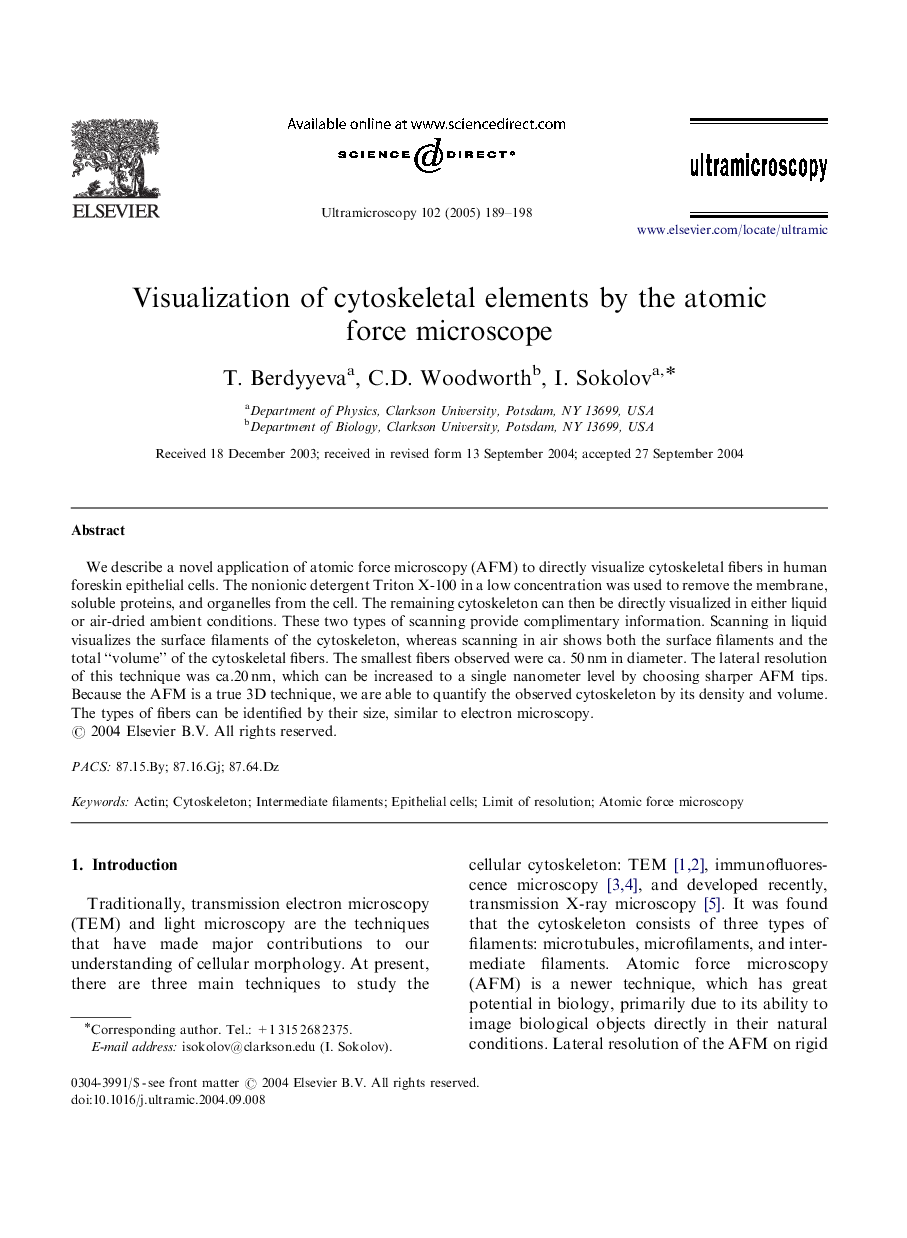| Article ID | Journal | Published Year | Pages | File Type |
|---|---|---|---|---|
| 10672697 | Ultramicroscopy | 2005 | 10 Pages |
Abstract
We describe a novel application of atomic force microscopy (AFM) to directly visualize cytoskeletal fibers in human foreskin epithelial cells. The nonionic detergent Triton X-100 in a low concentration was used to remove the membrane, soluble proteins, and organelles from the cell. The remaining cytoskeleton can then be directly visualized in either liquid or air-dried ambient conditions. These two types of scanning provide complimentary information. Scanning in liquid visualizes the surface filaments of the cytoskeleton, whereas scanning in air shows both the surface filaments and the total “volume” of the cytoskeletal fibers. The smallest fibers observed were ca. 50Â nm in diameter. The lateral resolution of this technique was ca.20Â nm, which can be increased to a single nanometer level by choosing sharper AFM tips. Because the AFM is a true 3D technique, we are able to quantify the observed cytoskeleton by its density and volume. The types of fibers can be identified by their size, similar to electron microscopy.
Keywords
Related Topics
Physical Sciences and Engineering
Materials Science
Nanotechnology
Authors
T. Berdyyeva, C.D. Woodworth, I. Sokolov,
